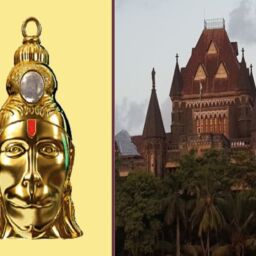Demands have always been made for a diverse and inclusive judiciary in India. The very first bench of the Supreme Court after the independence had Justice H. J. Kania as the Chief Justice of India, while all the other remaining Federal Court judges also became the judges of the Supreme Court. Out of these 6 judges, only Justice Fazl Ali was Muslim, as the Federal Court always had the reservation of a ‘Muslim seat’. The rest of 5 judges were upper-caste Hindus. Even the first appointment to the Supreme Court was that of N. Chandrasekhara Aiyar, who was also an upper-caste Hindu.
The Supreme Court did not have a single judge belonging to the Other Backward Classes or Schedules Caste community till 1980 when Justice A. Vardarajan was appointed as a Supreme Court judge. And till now, Supreme Court has not had a single judge appointed from the Scheduled Tribes. In reply to an unstarred question in Parliament in 2018, the minister of state for law and justice and corporate affairs, P. P. Chaudhary said, “There is no policy of reservation, and ‘no caste or class-wise data relating to High Court judges is maintained’”. This puts into context the problem of lack of representation of minorities in the judiciary, especially at higher levels of the judiciary.
The first women judge, Justice Fathima Beevi, was appointed to Supreme Court only in 1989 and since then only eleven other female judges have been appointed to the Supreme Court. And out of those only 2 judges- Justice Ruma Pal and Justice R. Banumathi- have been part of the Supreme Court’s collegium. Madras High Court has the highest number of female judges in the country, with 13 female judges, and is followed by Punjab and Haryana High Court which has 11 women judges.
In 2019, the government of India told the Lok Sabha that only 7% of judges across the 25 High Courts are females. High Courts of Manipur, Meghalaya, Uttarakhand, and Tripura currently have no female judge on their roster. In the lower judiciary, which is the most accessible to the common people and handles the majority of the cases, has only about 27% or 15,800 female judges. And despite being the world’s largest democracy, India is yet to have a female CJI. While it is probable that India might get its first female CJI in 2027, however even then Justice B. V. Nagarathna will serve a term of 36 days, making it the third shortest tenure ever served by any CJI in the history of the Supreme Court since it was established in its present form in 1950.
In the last 5 years, the Courts have made progressive decisions for the LGBTQIA+ community. Despite all of this, Supreme Court has deferred the appointment of India’s first openly gay judge of one of the higher courts of the country, since 2017. Senior Advocate Saurabh Kirpal was first suggested for elevation to the position of judge in the Delhi High Court back in 2017, itself. But the Supreme Court of India deferred his name thrice since then. Senior Advocate Kirpal also said that the main reason for the deferment of his name might be his sexual orientation and the fact that his partner is a foreign citizen. While his file remains under “process”, the Collegium has approved the names of five other individuals in the same list as his and rejected three. The Supreme Court collegium has discussed his name three times and “found no inadequacies in his candidature and yet took no final call on his appointment”. In November this year, Supreme Court Collegium recommended Senior Advocate for appointment as a judge at the Delhi High Court.
JHARKHAND HIGH COURT’S RECENT ELEVATION
In September the Supreme Court recommended five judicial officers for appointment/elevation to Jharkhand High Court. This recommendation reinforced the trend of exclusion of women and minorities for the position of High Court judges. According to Jharkhand’s 2011 census, the total population of the state is 3.3 crores. Out of this Schedule, Castes form 12.08% of the population, while Muslims and Scheduled Tribes from 14.53% and 26.21% of the state population, respectively. But their representation in the State’s High Court doesn’t correspond to their population in the State.
Since the formation of the State in 2000, it has had only two judges from the Adivasi community and two Muslim judges presiding over the Court’s bench. It has had only five female judges as part of the High Court. This forms a concern as the most cases of importance heard by the State High Court are those involving forest and dwelling rights of tribal people, but the judges who are a part of the bench don’t have any background about the culture of tribal people. Jharkhand frequently experiences tribal displacement, fake encounters of young Adivasi people for protesting the displacement. Yet, despite this, the state has had only two Adivasi judges.
Out of the 19 judges in the Court, only one judge is female. Added to his is the lack of religious underrepresentation. Jharkhand High Court hasn’t had any Muslim judge elevated/appointed to the bench for the last 15 years.
WHY IS A DIVERSE JUDICIARY NEEDED?
This lack of adequate representations leads to demand for positive action, as it is often clear that judges’ background and experiences influence their opinions. A quite frequently cited example is that of State of Karnataka v. Irappa, wherein the High Court of Karnataka acquitted a hotel proprietor who was accused of using separate utensils for Dalits. He was acquitted on the ground that there was a 12-hour delay in filing the complaint and the complainant did not specifically mention that the utensils were kept separately. In another instance, Kerala High Court’s Justice V. Chitambaresh was criticised for his glorifying remarks about Brahmins. In 2014, Justice Anil R. Dave said that if he had been a dictator, “he would have made Gita and Mahabharata compulsory in schools”.
In 2020, the Attorney General K.K. Venugopal submitted suggestions to the Supreme Court, on its request, on the Indian judiciary needing more women judges to “eliminate insensitive approach of courts” towards sexual violence cases. His submission came after an appeal filed by nine female lawyers who sought regulation of bail conditions in rape, molestation and attempt. This appeal was a result of the Madhya Pradesh High Court’s order in a molestation case. The Court granted bail to the accused on the condition that the accused gets a rakhi tied by the complainant and tenders Rs.11,000 to the complainant as a customary ritual and seek her blessings. The petition filed as a result of this order stated that “There is a strong likelihood that such observations and directions may result in normalising what is essentially a crime”. His report expanded how the number of female students enrolled in law school equals the male students, however, not many women lawyers get designated as seniors. His submissions put forth that there are 17 female senior advocates in Supreme Court in comparison to 403 male senior advocates. In Delhi High Court there are 8 women senior advocates for 229 male senior advocates. For Bombay High Court, there are 157 male senior advocates for 6 female senior advocates.
His observation that lack of female judges leads to insensitive approach by Courts was reinforced in 2021 by Chhattisgarh High Court’s judgment which held, sexual intercourse or any sexual act by a husband with his legally wedded wife is not rape even if it was by force or against her wish”. The Court relied on the Exception II provided under IPC Sec 357 (Rape), which legalizes marital rape, to reach this observation.
DOES HAVING A DIVERSIFIED JUDICIARY SOLVE THE PROBLEM?
The inclusion of minority judges doesn’t guarantee pro-minority and inclusive judgements, orders and decisions. Even women judges can give patriarchal judgements. And non-minority judges can also give pro-minority judgments, like Justice Iyer, whose judgements often sported minority rights.
The objective associated with diversification and increasing inclusivity of judiciary is to dismantle a system where the privileged, elitist group makes pro-minority judgements for marginalised groups. It has been argued that diversified judicial system reinforced confidence in the judicial system. Women judges often help in curbing the stereotypes of their male colleagues while religious and caste minorities often bring sensitivity towards different religious groups and castes to the table. It has been remarked that an attempt to bridge the gap between adequate representation and the lack of it will lead to enhanced capabilities of the judiciary and enable it to have in-depth and foundational growth. The underrepresentation of minorities raises questions on the credibility of the judiciary and it is time that the collegium starts being accountable and restoring credibility to the system.
Author(s) Name: Avisha Dhiman (Maharashtra National Law University, Mumbai)
















